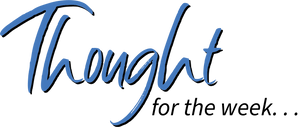
Want to Be Ready for What Lies Ahead? Consider These Ten Questions
After the end of an eventful school year, the beginning of a well-deserved summer break can be a good time to step back, reflect, and attempt to make sense of the shifting, stirring, and often stubborn issues and challenges we face. The pace of our work can often make it difficult to see and make sense of what is happening in the world around us. Consequently, while we might busy ourselves trying to fix symptoms of problems, we might not truly understand the root causes of what vexes us.
Teachers, administrators, paraeducators, and other school staff members share many frustrations and distractions that can get in the way of serving students and supporting their learning. The challenge is to frame issues so that they can be understood and addressed. Fortunately, questions can often serve as tools to begin the process of understanding and lead us to see issues with greater depth and insight.
As we reflect on this school year and think about the next one—or the ones after that—we can use some key questions to guide our thinking, planning, and actions. Here are ten questions that may be useful to the quest.
- How is the make-up of our student body changing? What do we know about changes in poverty levels, shifting demographics, expectations of education, career aspirations, and other experiences, expectations, and challenges that shape our students’ relationships with us and learning? How might shifts in make-up of the student body be having an impact on academic achievement, behavior, social cohesiveness, and other issues we observe?
- What forces are shaping the ways in which our students relate to each other and us? Technology, social media, and political divisions may be at play. Shifts in housing development and availability or in socioeconomic appearances might also be factors. We may not be able to change or dismantle these forces, but recognizing them can help us to understand, give guidance, and provide resources where appropriate. We might teach students more or different coping mechanisms, coach useful skills, and offer other opportunities to counter what they face.
- What rules and expectations no longer serve the purposes for which they were established? Consider that chewing gum was a big no-no in the 1950s (and in some schools and classrooms still to this day!). Hair and skirt length were flashpoints in the 60s. Some schools had policies about students’ “bold beauty” expressions in the 80s. What battles are we fighting today that need a “ceasefire” and a reset? Cellphones and smartwatches are receiving lots of attention, for valid reasons, but they are likely not the only elements to consider.
- What routines and rituals no longer seem relevant to—or serve the interests of—our students? Tradition components of student dances, pep assemblies, theme days, and some clubs might be places to start our reflection. How are we shifting what we offer to align with what students find interesting and worth engaging in? Esports, niche clubs, and student-generated activity ideas might be good starting places.
- What instructional practices no longer generate the same levels of engagement and learning? Teaching harder, persisting longer, and pushing more may not be the answer, especially when those things occur at the expense of teacher morale and student achievement. It may be time to shift approaches, let go of long-held assumptions, and explore other strategies. As examples, what if we began our instruction where students are, not where we want—or where the curriculum expects—them to be? What if we gave students more choice and voice in what and how they will learn? What if, instead of us setting goals for students, students were expected and supported to set goals for their own learning?
- How clear are we about the future for which we are preparing our students? Of course, no one can fully predict the future, but there is much that we can anticipate and plan for. What skills will students need to be successful? Where and how well are we teaching, nurturing, reinforcing, and having students utilize these skills as they learn?
- Do we need to revisit how are we defining success? Are test scores enough? Many educators, if not most, say no. What other data and indicators should be captured and analyzed? What might a comprehensive profile of success look like for our students? For our school or district? Students and learning are complex, and determining what defines success needs to reflect that.
- How are parent expectations changing? We know that in general, parent support has waned. What might be causing this shift? What might we do to better align what we do with what parents are expecting? What can be done to see higher levels of parent support, and how do we get there? Similarly…
- How are the ways in which parents and the community communicate and engage with us changing? Are periodic newsletters effectively communicating our message? How effective are the channels through which parents and the community communicate with us? Might we need to engage new or shift social media and messaging platforms? How will we know when we get it right?
Obviously, not every question on this list is relevant to your circumstance, and some of the ideas mentioned are more actionable than others. There also may be issues or topics missing from this list that you need to consider and plan for as you think about the coming year. You know your community and the issues and pressures that are likely to require attention and leadership in the next school year. Consider framing these items as questions for your reflection, investigation, and planning during the summer months—but make time to focus on relaxation and restoration, too.

Take Your District and School Professional Learning to a New Level!
learn more
- Teachers
- Administrators
- Paraeducators
- Support Staff
- Substitute Teachers

- Teachers
- Administrators
- Paraeducators
- Support Staff
- Substitute Teachers






Leave a comment
Your email address will not be published. Required fields are marked with *